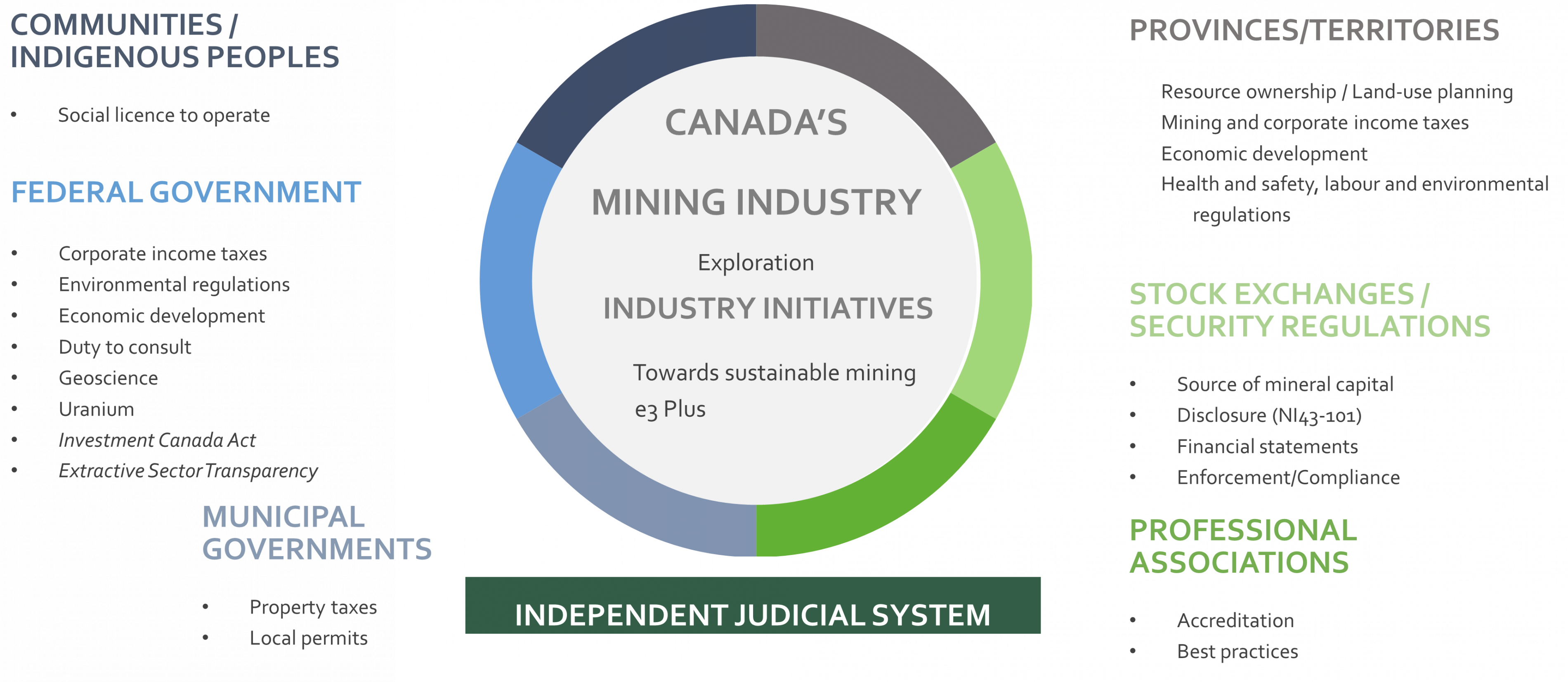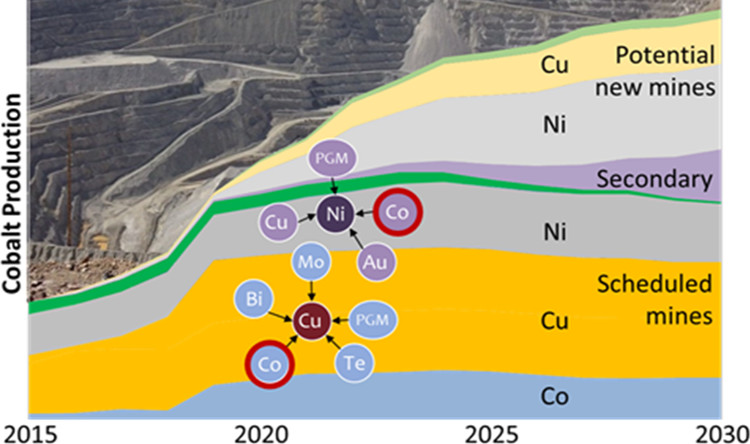Approach to Mining for Cobalt in Canada
The Mintly Team
December 20, 2023Cobalt, a vital element in the production of batteries for electric vehicles and renewable energy storage systems, has seen a surge in demand in recent years. As the world transitions towards a greener future, the need for sustainable and responsible mining practices has become paramount. Canada, known for its rich mineral resources, has taken a proactive approach to mining for cobalt, ensuring environmental protection, social responsibility, and economic benefits for local communities. In this blog, we will explore the approach to mining for cobalt in Canada and its significance in the global context.
1. Environmental Regulations and Protection
Environmental regulations and protection play a crucial role in mining operations, especially when it comes to extracting cobalt in Canada. Cobalt is an essential component used in various industries, including electronics and renewable energy. However, its extraction can have significant environmental impacts if not properly regulated and managed.
In Canada, environmental regulations for mining activities are stringent and aim to minimize the negative effects on ecosystems and communities. The federal and provincial governments have implemented a comprehensive framework that ensures mining operations adhere to strict environmental standards.
One of the key aspects of environmental protection in mining for cobalt is the assessment and mitigation of potential impacts. Before any mining activity can commence, companies are required to conduct thorough environmental assessments to identify potential risks and develop appropriate mitigation measures. These assessments consider factors such as water quality, air pollution, habitat destruction, and the displacement of wildlife.
To protect water resources, mining companies must implement measures to prevent contamination and ensure the proper management of waste water. This includes the construction of containment facilities, the implementation of water treatment systems, and the monitoring of water quality throughout the mining operation.
Additionally, strict regulations are in place to control air emissions from mining activities. Companies are required to use advanced technologies to reduce dust and emissions of harmful substances such as sulfur dioxide and nitrogen oxides. Regular monitoring and reporting of air quality are mandatory to ensure compliance with these regulations.
Furthermore, reclamation and site rehabilitation are essential components of environmental protection in mining for cobalt. Mining companies are obligated to develop comprehensive plans for land restoration once mining operations cease. This includes re-vegetation, soil stabilization, and the restoration of natural habitats to their pre-mining condition.
2. Indigenous Engagement and Consultation
Indigenous engagement and consultation are critical components when it comes to mining for cobalt in Canada. The country recognizes the importance of respecting the rights, cultures, and traditional knowledge of Indigenous communities throughout the mining process.
Canada has a legal framework that requires mining companies to engage and consult with Indigenous communities in a meaningful and inclusive manner. This framework is based on the principles of free, prior, and informed consent, which means that Indigenous communities have the right to be fully informed about proposed mining projects and have the ability to give or withhold their consent.
Engagement and consultation with Indigenous communities go beyond a mere formality. It is a process that aims to build relationships, foster trust, and ensure that Indigenous perspectives, concerns, and interests are taken into account. This includes addressing potential environmental impacts, protecting cultural heritage sites, and providing economic benefits to Indigenous communities.
Mining companies are expected to develop comprehensive engagement plans that involve ongoing dialogue with Indigenous communities. These plans should include opportunities for meaningful participation, such as joint decision-making processes, capacity-building initiatives, and the inclusion of traditional knowledge in project planning and monitoring.
Furthermore, Indigenous engagement and consultation should be conducted in a culturally sensitive manner, taking into account the unique customs, languages, and governance structures of each community. It is important to recognize that Indigenous communities have diverse perspectives and interests, and that no single approach can fit all situations.
3. Sustainable Resource Management
Sustainable resource management for mining cobalt in Canada is crucial for minimizing environmental impacts and ensuring the long-term viability of the industry. Cobalt is a key component in the production of batteries used in electric vehicles and renewable energy systems, making its extraction and processing essential for the global transition to a low-carbon economy.
In Canada, sustainable resource management practices focus on minimizing the extraction’s ecological footprint and promoting responsible mining techniques. This includes implementing rigorous environmental impact assessments, adopting efficient water and energy management strategies, and employing advanced technologies to reduce emissions and waste generation.
To address the potential social impacts of cobalt mining, sustainable practices prioritize community engagement, Indigenous consultation, and the promotion of local employment opportunities. This ensures that mining activities benefit local communities while respecting their rights, cultures, and traditional territories.
Moreover, sustainable resource management for cobalt mining in Canada emphasizes the importance of mine site rehabilitation and reclamation. Companies are required to develop comprehensive closure plans that aim to restore the land and ecosystems affected by mining activities. This includes implementing measures to prevent soil erosion, restoring vegetation, and rehabilitating water bodies.
4. Social Responsibility and Community Development
Social responsibility and community development play crucial roles in the mining industry, particularly in the context of cobalt mining in Canada. Cobalt, a key component in batteries for electric vehicles and renewable energy storage, has gained significant attention due to its environmental and social impact.
Mining companies operating in Canada have recognized the importance of responsible mining practices that prioritize community well-being and environmental sustainability. They understand that mining operations can have both positive and negative effects on local communities and ecosystems.
In terms of social responsibility, mining companies in Canada strive to engage with local communities through open and transparent communication channels. They aim to build trust by consulting with community members and addressing their concerns. Furthermore, these companies invest in education, healthcare, and infrastructure development to improve the quality of life for local residents.
Community development initiatives focus on creating sustainable livelihoods beyond the mining operations. This includes supporting local businesses, promoting entrepreneurship, and providing training and employment opportunities for community members. By doing so, mining companies contribute to the economic growth and social well-being of the communities where they operate.
Environmental sustainability is also a key aspect of social responsibility in cobalt mining. Mining companies implement rigorous environmental management practices to minimize their ecological footprint. They work towards reducing water and energy consumption, implementing land reclamation plans, and adopting innovative technologies to mitigate environmental impacts.
5. Global Significance for Mining Cobalt
Mining cobalt in Canada holds significant global significance due to several factors.
Firstly, Canada is one of the world’s largest producers of cobalt, accounting for a considerable portion of the global supply. With increasing demand for cobalt in various industries, particularly in the production of electric vehicle batteries, Canada’s role in the global cobalt market becomes crucial. The country’s abundance of cobalt reserves and mining expertise ensures a stable supply of this critical metal.
Secondly, Canada’s commitment to responsible and sustainable mining practices adds to the global significance of its cobalt production. The Canadian mining industry adheres to stringent environmental and social standards, ensuring minimal environmental impact and promoting community engagement. This sets an example for other cobalt-producing nations and contributes to the global effort towards sustainable resource extraction.
Furthermore, you cannot over look the geopolitical implications of Canada’s cobalt mining. Majority of cobalt reserves are concentrated in a few countries, including the Democratic Republic of Congo. Hence, diversifying the global supply chain becomes imperative. Canada’s significant cobalt production reduces reliance on a single source and enhances global resource security.
Cobalt Mining Jobs in Canada
Cobalt mining job opportunities in Canada are on the rise due to the increasing demand for cobalt, a critical component in batteries used for electric vehicles and renewable energy storage. Canada is one of the world’s largest producers of cobalt, with significant deposits in Ontario and Quebec.
These mining jobs offer various opportunities for employment, ranging from entry-level positions to skilled and specialized roles. Jobs in cobalt mining include underground miners, heavy equipment operators, geologists, engineers, and environmental technicians.
Working in cobalt mining provides a chance to contribute to the growing clean energy industry while also benefiting from competitive wages and benefits. However, it is essential to note that mining can be physically demanding and requires adherence to strict safety protocols.
Saskatchewan is another province with full of job opportunities. Want to know how to find jobs in mining in Saskatchewan? Read out detailed guide.
With the global shift towards sustainable energy solutions, cobalt mining job opportunities in Canada are expected to continue expanding. This is making it an attractive sector for providing lucrative opportunities in the mining industry.
Final Thoughts
In conclusion, Canada’s approach to mining for cobalt demonstrates a commitment to environmental protection, social responsibility, and sustainable resource management. By prioritizing these principles, Canada ensures the long-term viability of its mining industry. It also contributes to global efforts towards a greener future. The country’s efforts serve as an inspiration for other nations seeking to develop their cobalt mining sectors. This can help them minimizing negative impacts on the environment and local communities.
All Tags
